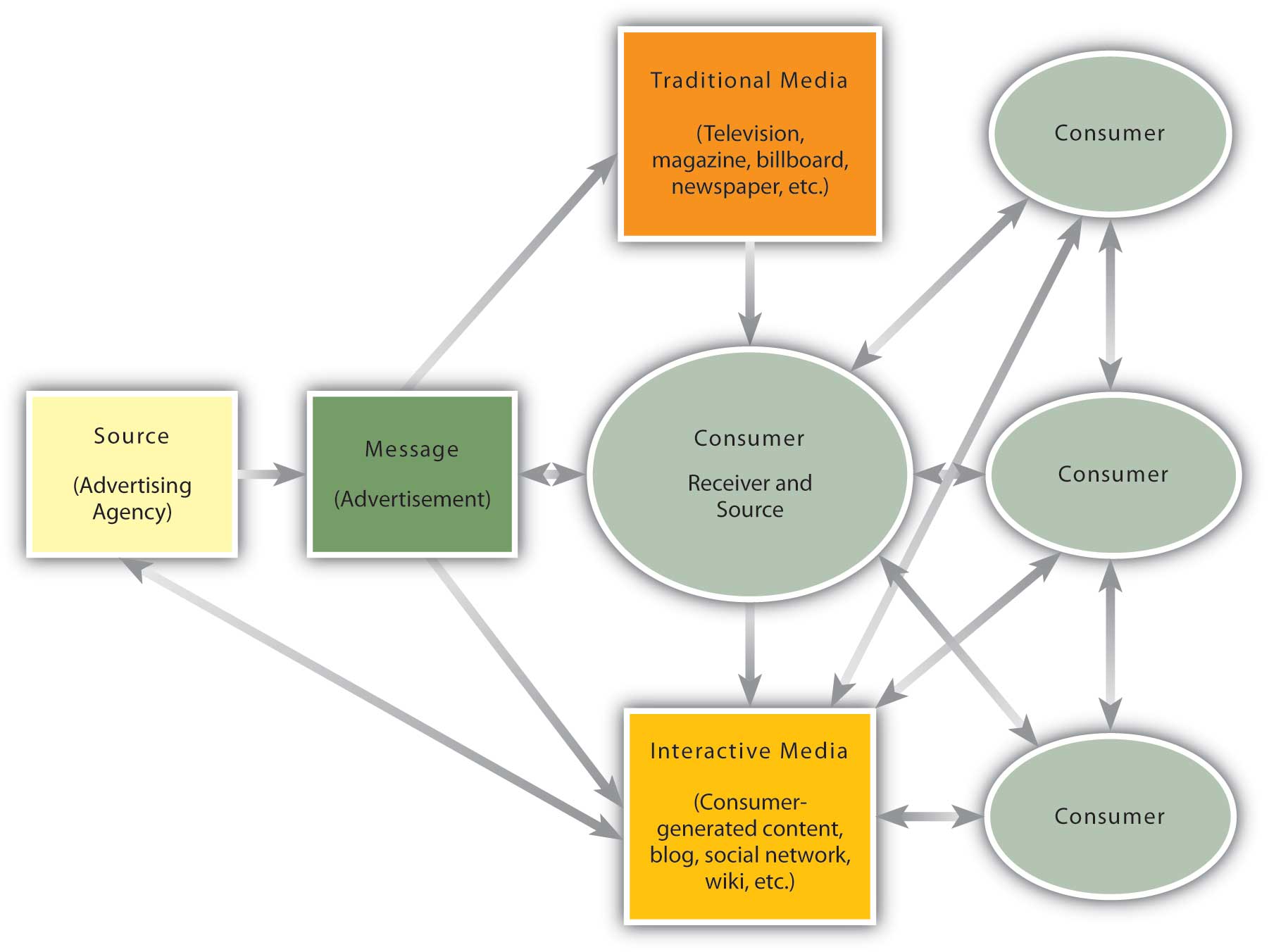After studying this section, students should be able to do the following:
Figure 4.2 The Traditional Communications Model

For most of history, advertisers talked to consumers—the traditional communications modelA one-way communication system in which the source created a message and selected the medium that carried the message to the receiver. was a one-way street. It was pretty simple, really: The source (such as an advertising agency) created a message (the advertisement) and selected the medium (newspaper, TV, outdoor, etc.) that carried it to the receiver (the consumer). The consumer may have given feedback to the source about the message (typically only indirectly, namely by buying the advertised product or service or not)—and of course she may have ignored it, just as people often do today—but the line of communication was clearly drawn. The producer called the shots and the message was univocal (one voice).
Flash forward to a more dynamic—and chaotic—picture. Today, advertising messages come from many sources simultaneously through different media that target different receivers (consumers, business partners, stockholders, even government officials). At the same time, receivers talk with one another and they may initiate their own communication with the sender, whether that organization wants to hear it or not.
The updated communications modelThe interactive, nonlinear, and multivocal communication process prevalent in twenty-first-century advertising. is interactive, nonlinear, and multivocal (many voices). In addition, consumers now may choose to opt out of listening to a particular message—they often get to decide which messages they see or hear, and when. In the old days, opting out meant getting up to make a sandwich when a TV commercial came on, but today many of us have a lot more control to determine what messages will appear for us to consider in the first place. For marketers, this permission marketingA strategy in which consumers (receivers) indicate (for example, by searching for a certain topic on the Internet) that they are interested in receiving a communication before the sender transmits the message. strategy makes sense (even though some may be indignant that they’re losing control over the situation). The rationale is very simple: A message is more likely to persuade consumers who have agreed to listen to it in the first place.
Figure 4.3 A New Interactive, Nonlinear, Multivocal Communications Model

Seth Godin, founder of direct interactive marketing agency Yoyodyne (which Yahoo! later acquired) explains the importance of permission marketing: “We’re getting good at avoiding spam: e-mail spam, newspaper spam, TV spam, calling-me-at-home-over-dinner spam. The point of advertising shouldn’t be to interrupt more people who don’t want to talk to us.” To be heard above the noise, advertisers should seek permission from people to tell their story and begin a private, personal conversation that revolves around mutual interest and respect.Quoted in “Expert Tells Marketers: To Be Memorable, Get Permission” InformationWeek, May 18, 2007, http://www.informationweek.com/news/internet/showArticle.jhtml?articleID=199602077 (accessed May 18, 2007).
If we understand the communications model, we appreciate how messages affect people, how people make purchase decisions, and what influences these choices. These issues can help advertisers understand why people accept some messages while they ignore others. After all, it’s frustrating to be ignored—but in the world of advertising it’s also expensive.
We are used to thinking about communication as a one-way process that moves from a source who chooses what to say, how to say it, and where to say it to a receiver who either absorbs the message or not. That basic assumption is no longer valid in many cases, as consumers today become more proactive in the communications process. This creates many more interesting advertising possibilities, but it’s also harder to control the process once the inmates run the asylum.